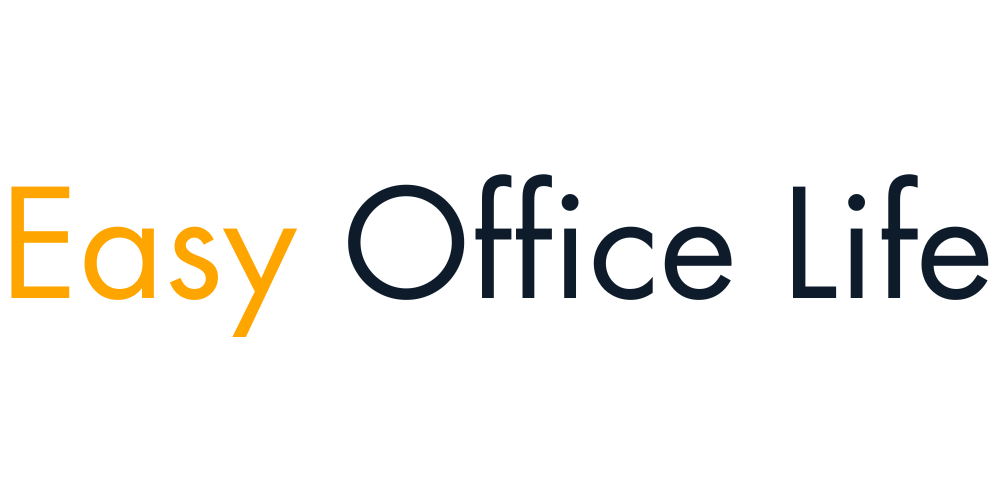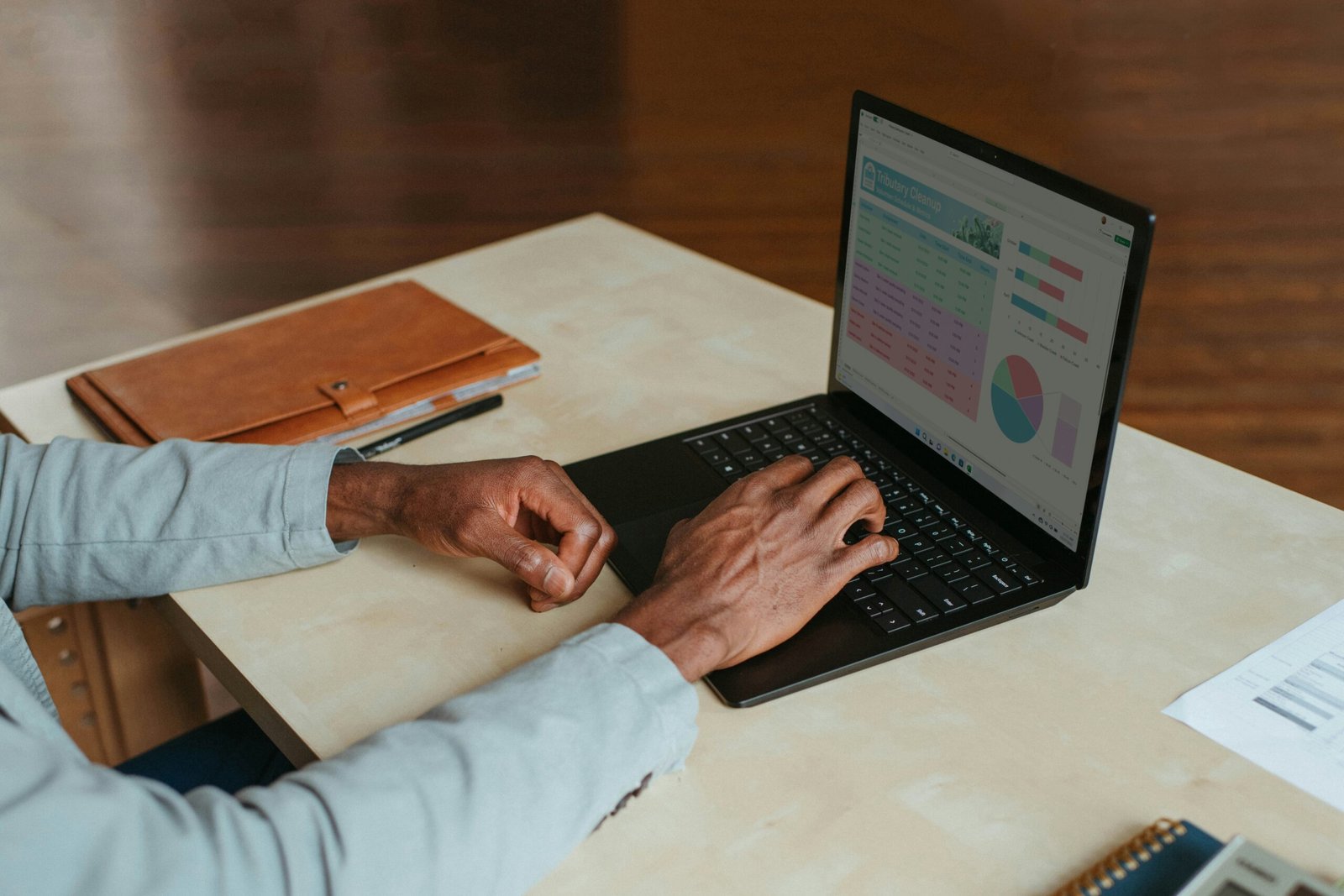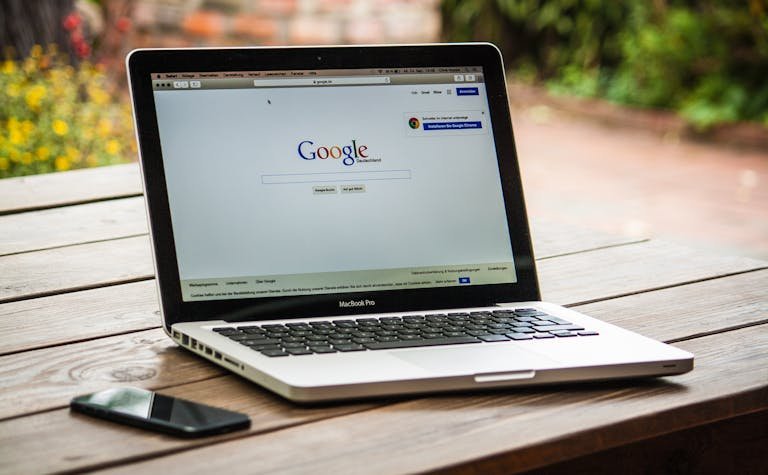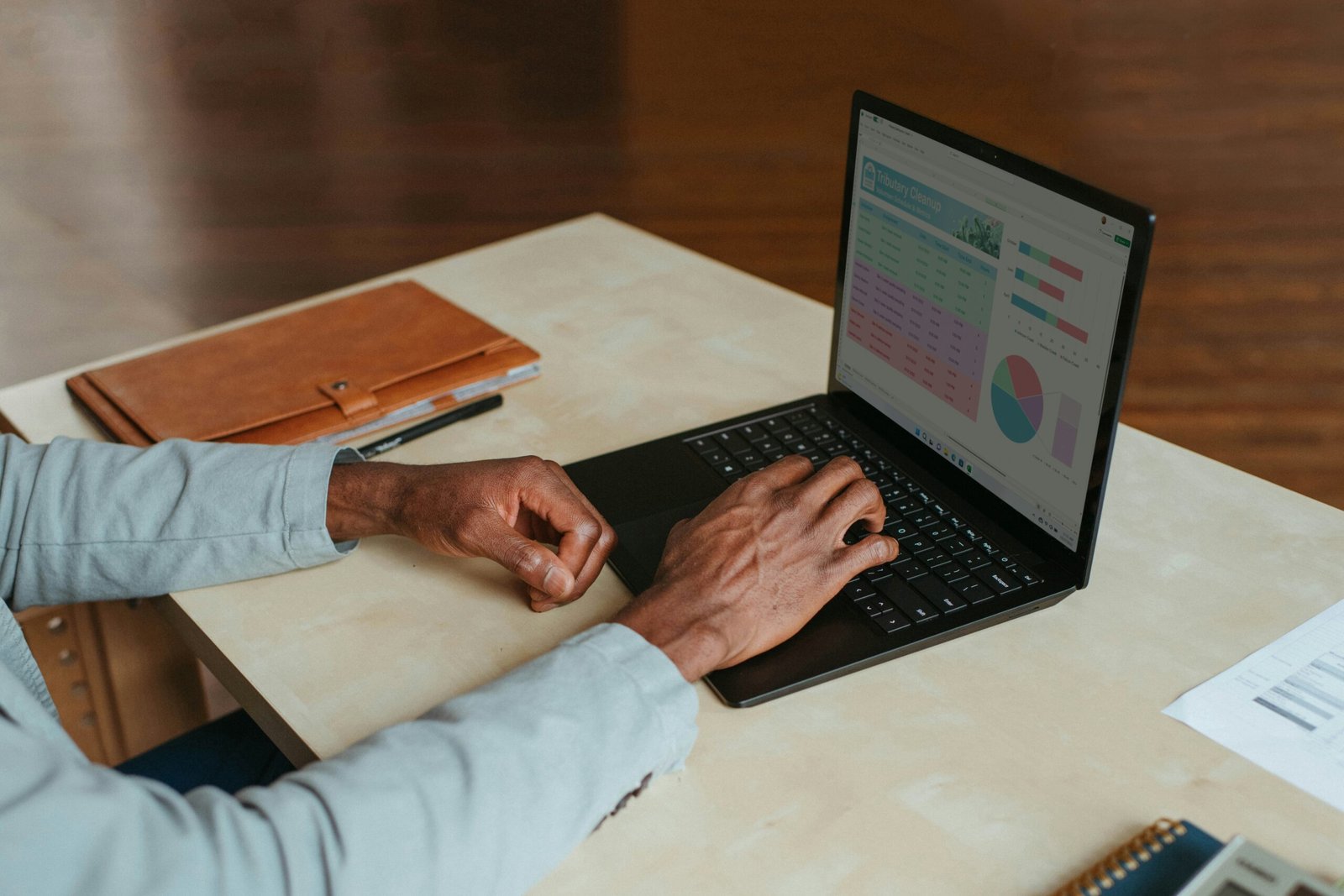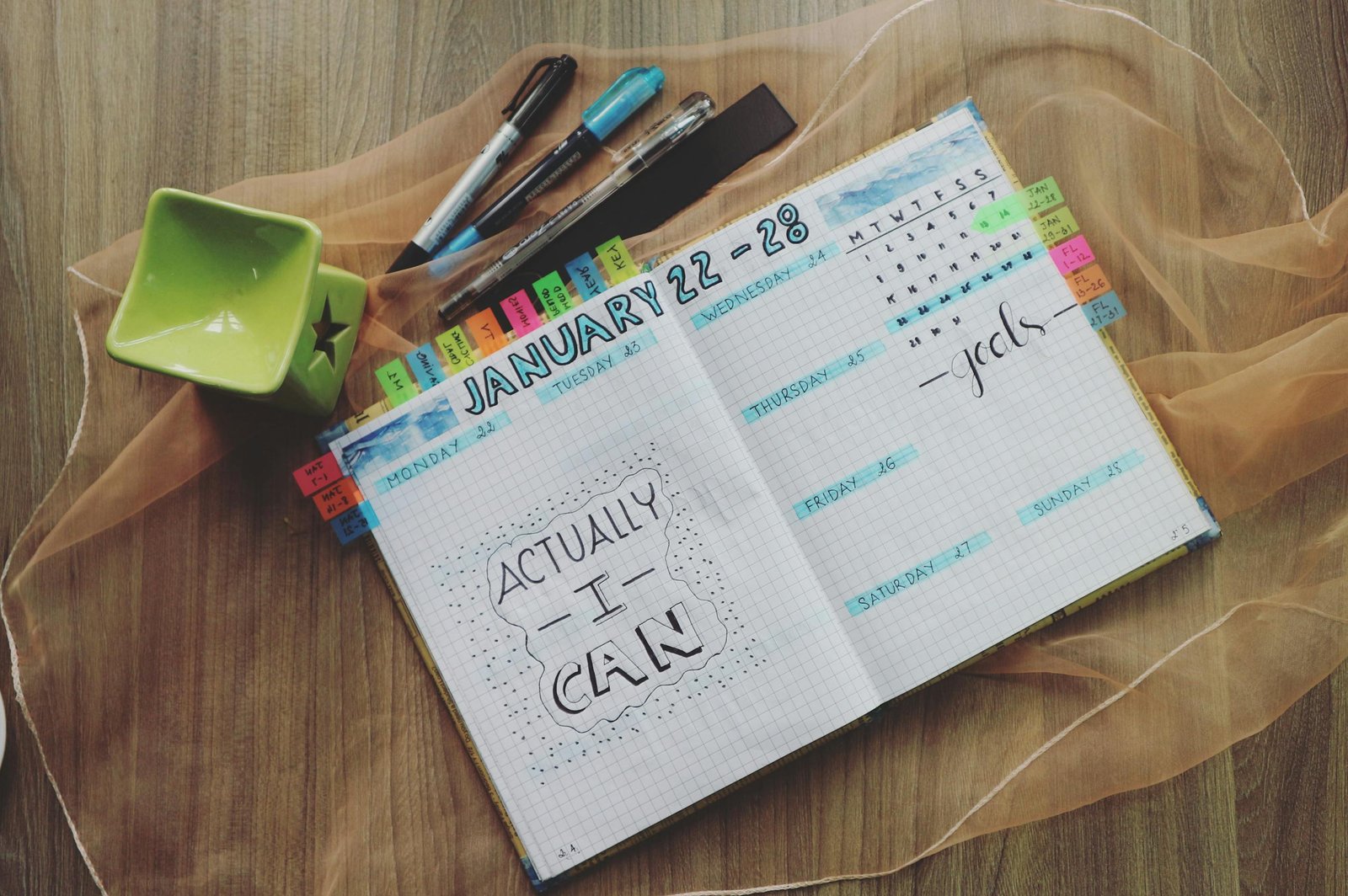
Introduction to Remote Work and Planning
Remote work has become increasingly prevalent in today’s professional landscape, allowing individuals to work outside the traditional office environment. This shift has been accelerated by advancements in technology and changing organizational priorities, enabling employees to collaborate efficiently from any location. However, the convenience of remote work also presents unique challenges, particularly in the realms of time management and task prioritization. To navigate these challenges successfully, it is essential for remote workers to employ effective organizational strategies.
One of the most beneficial approaches to mastering remote work is through the structured use of a planner. A planner serves as a valuable tool to outline tasks, set deadlines, and prioritize responsibilities. Implementing a planning system not only helps keep track of work-related projects but also contributes to a greater sense of accountability and productivity. By visually mapping out daily, weekly, and monthly goals, individuals can ensure they remain focused and organized in their work endeavors.
Using a planner allows remote workers to break larger projects into manageable tasks, facilitating a clearer pathway toward achieving objectives. Furthermore, it enables the incorporation of routines, which can be crucial in the often fluid environment of remote work. Consistent scheduling creates a framework that fosters discipline, making it easier to balance work commitments with personal obligations.
In essence, understanding how to use a planner for remote work becomes paramount for individuals seeking to optimize their productivity. The ability to adapt organizational methods to one’s specific workflow can lead to more consistent results and ultimately contribute to a successful remote working experience. Consequently, embracing a planner not only enhances individual output but also promotes a healthier work-life balance.
Choosing the Right Planner for Your Needs
When it comes to mastering remote work, selecting the right planner is crucial for staying organized and managing your time efficiently. Planners come in various formats, mainly digital and paper, each with its unique set of features. Understanding these differences can significantly enhance your productivity. Digital planners, for example, offer flexibility and accessibility, allowing you to access your schedule from multiple devices. Applications like Trello and Notion enable you to collaborate with teammates in real-time, making them ideal for remote work environments. Additionally, they often include integration with other productivity tools, which can streamline your workflow.
On the other hand, paper planners provide a tactile experience that some individuals find beneficial for memory retention and focus. Writing tasks down by hand can create a stronger mental connection, which may lead to better task completion. Many paper planners come with customizable layouts, such as weekly, daily, or hourly sections, allowing you to structure your time according to your personal preferences. For those who value the distraction-free nature of a physical planner, this option may be more suitable.
When choosing between these options, consider your work style. Do you often switch between devices, or do you prefer a dedicated space to jot down tasks? Assess your daily habits and note how you plan to use your planner for remote work. If you thrive on visual organization, a digital format might excel with features like color-coding and reminders. Alternatively, if you appreciate the ritual of writing and organizing on paper, a traditional planner could complete your work setup. Ultimately, understanding how to use a planner for remote work effectively means recognizing the unique characteristics of each type to select the one that aligns best with your needs.
Setting Goals and Priorities
Effectively utilizing a planner for remote work begins with the establishment of clear goals and priorities. Setting both short-term and long-term goals enables individuals to map out their professional trajectory and maintain focus amid distractions. Short-term goals, often spanning days to weeks, may include daily task completion or project milestones, while long-term goals usually reflect broader career aspirations or significant project outcomes over months or even years.
When using a planner for remote work, an effective strategy involves employing the SMART criteria—ensuring goals are Specific, Measurable, Achievable, Relevant, and Time-bound. For instance, rather than setting a vague goal such as “improve communication,” a SMART goal might be “schedule bi-weekly check-ins with my team to enhance project updates.” This level of specificity not only clarifies expectations but also makes progress easily trackable.
Prioritizing tasks is equally essential and can be achieved through the Eisenhower Matrix, which categorizes tasks based on urgency and importance. For instance, tasks that are both urgent and important should be completed immediately, whereas those that are important but not urgent can be scheduled for later. Tasks that are urgent but not important may be delegated, and those that are neither can be eliminated or postponed. By implementing this matrix within a planner, remote workers can distinctly outline their daily to-do lists, ensuring that their efforts align with overarching goals. Additionally, regular reviews of both short-term and long-term goals will support individuals in adjusting priorities as circumstances evolve.
In conclusion, mastering how to use a planner for remote work necessitates the systematic setting of goals and priorities. By clearly defining aspirations and effectively prioritizing tasks, remote professionals can enhance productivity and maintain focus on what matters most.
Creating a Daily and Weekly Schedule
Establishing a structured daily and weekly schedule is a crucial aspect of mastering remote work. Using a planner to organize tasks can enhance productivity and ensure that work-life balance is maintained. One effective method is time blocking, where you allocate specific time slots for different activities. This technique allows you to visualize your day and dedicate uninterrupted time to crucial tasks. Begin by identifying your most important work assignments and blocking off substantial segments of time in your planner for these activities.
Incorporating breaks into your schedule is equally essential. When working remotely, it is easy to forget to step away from your screen. Schedule short 5-10 minute breaks every hour and longer breaks, like lunch, at regular intervals. This approach can help prevent burnout and maintain focus throughout the day. Additionally, be sure to include personal activities and downtime in your planner. Remote work often blurs the lines between professional and personal life; therefore, it is vital to delineate when work hours end and personal time begins. This practice will help keep stress levels in check and promote overall well-being.
A weekly planner can also provide a broader perspective on your tasks. At the beginning of each week, review upcoming deadlines and create an outline of major projects, meetings, and personal commitments. This process will enable you to prioritize effectively and adjust your daily schedules accordingly. Keep in mind that flexibility is key; adjust your planner as unforeseen tasks arise or as personal matters need attention. By mastering how to use a planner for remote work, you can create consistency and structure in your daily and weekly routines, ultimately leading to increased productivity and reduced stress.
Incorporating Self-Care and Breaks
In the realm of remote work, the significance of self-care has become increasingly pertinent. Maintaining productivity while working from home is not merely a function of discipline and time management; it also hinges on the ability to prioritize one’s well-being. Integrating self-care activities into your planner can safeguard against burnout, ultimately enhancing your performance and satisfaction in your role.
One effective strategy is to allocate specific times for breaks within your planner. Utilize time blocks to ensure that your schedule accommodates these much-needed pauses from work. For instance, consider employing the Pomodoro Technique, which incorporates 25 minutes of concentrated work followed by a 5-minute break. This minimal investment of time can lead to noticeably heightened focus and energy levels when you return to your tasks. By scheduling these intervals, you create a structured environment conducive to both productivity and mental well-being.
Furthermore, beyond mere breaks, it is essential to integrate self-care practices directly into your daily planner. Activities such as meditation, stretching, or even a short walk can significantly rejuvenate your mind and body. For those who may feel guilty about stepping away from their tasks, consider categorizing these activities as part of your work process. Label them in your planner so that they are recognized as critical components of your overall productivity strategy, not as distractions.
Moreover, diversifying the types of self-care activities included can also foster a more holistic approach. Try to incorporate activities that resonate personally with you, whether it’s reading, engaging in a hobby, or simply enjoying a cup of tea in a serene setting. By doing so, you not only enrich your planner but also heighten the chances of sticking to these self-care commitments.
In conclusion, learning how to use a planner for remote work effectively entails more than just task management; it requires the intentional integration of self-care and scheduled breaks. Prioritizing these elements will not only lead to improved productivity but also foster a healthier work-life balance in the long run.
Tracking Progress and Reflecting
Using a planner for remote work is not merely about jotting down tasks; it encompasses a comprehensive strategy for tracking progress and reflecting on productivity. To maximize the effectiveness of a planner, set aside dedicated time at the end of each week to review your completed tasks and assess the overall progress toward your goals. This practice not only helps you identify what you have accomplished but also enables you to evaluate the efficiency of your planning methods.
During this reflection period, consider which tasks were most productive and which may have been neglected. Analyze the reasons behind any missed deadlines or incomplete tasks. Were they overly ambitious? Did unexpected circumstances arise? By critically assessing these factors, you can refine your planning techniques and set more achievable goals in the future. Additionally, this assessment can inform your scheduling for the upcoming week, allowing you to allocate your energy more effectively.
Incorporating a regular reflection strategy into your use of a planner allows for greater adaptability. It facilitates a proactive approach, ensuring that your planning process remains fluid and responsive to changing priorities. You can explore different techniques, such as goal setting and reviewing your achievements daily, to enhance your experience of how to use a planner for remote work. The insights gained through reflection can lead to increased motivation and a clearer understanding of your work patterns, contributing to sustained productivity and success in a remote environment.
In conclusion, tracking your progress and engaging in reflection through your planner can substantially boost your productivity and help achieve your objectives. Both practices not only enhance your ability to plan effectively but ensure that you remain engaged and motivated in your remote work journey.
Adapting to Changes and Flexibility
In the evolving landscape of remote work, adaptability is paramount. Working remotely often brings unforeseen challenges and changes to daily routines, making it crucial to develop strategies that allow for seamless adjustments while utilizing a planner effectively. When embracing a planner-centric approach, flexibility becomes integral to achieving productivity despite disruptions.
One key strategy for adapting to changes is to implement a system of regular reviews. Setting aside time weekly to assess your progress and upcoming tasks will help identify any necessary adjustments. This review process not only enables you to stay organized but also encourages proactive decision-making in response to unexpected developments. Additionally, marking flexible time blocks in your planner can create space for spontaneous tasks or urgent matters that may arise.
Technological tools can play a significant role in enhancing adaptability in remote work. Utilizing digital planners, which often include features like reminders and notifications, can aid in managing last-minute changes. By synchronizing your planner with calendars or project management software, you can ensure that all changes are instantly reflected across platforms, reducing the risk of overlooking crucial updates.
Moreover, cultivating a mindset of resilience and openness to change further strengthens your ability to navigate remote work challenges. Embracing the idea that plans may need to shift can reduce stress when faced with unexpected changes. Instead of viewing alterations as setbacks, consider them opportunities for growth and learning, allowing you to refine your planning techniques.
Ultimately, mastering how to use a planner for remote work involves not only strategic organization but also the capability to remain flexible. By integrating adaptability into your planning processes, you can enhance your productivity and effectively manage the uncertainties that remote work presents.
Tools and Apps for Enhanced Planning
In the age of digitalization, numerous tools and applications are available that can significantly enhance how one can manage their time and responsibilities, especially when deciphering how to use a planner for remote work. These tools not only make planning more efficient but often offer features that traditional planners cannot provide. Popular choices like Trello and Todoist excel in task management, allowing users to create checklists, set deadlines, and even collaborate with team members. Integrating these applications with physical planners can optimize your workflow.
Another valuable tool is Google Calendar, which helps individuals manage their schedules effectively. With its ability to sync across devices, Google Calendar enables easy access to your agenda, making it an excellent fit for remote workers who may need to juggle varied commitments. By strategically utilizing this tool, you can ensure that all your appointments and deadlines are captured, providing a seamless interface to complement your planner.
Project management applications such as Asana and Notion also shine in this context, allowing for complex project planning and tracking. These tools help break down larger projects into manageable tasks, providing clarity and making it easier to determine daily priorities. Furthermore, many of these applications offer integrations with other platforms, enhancing their functionality. For instance, linking your planner with Slack can streamline communication and improve productivity by keeping everyone on the same page.
Ultimately, realizing how to use a planner for remote work effectively involves embracing these tools and exploring their diverse functionalities. By integrating both digital and physical planning methods, you can create a personalized and efficient planning system tailored to your unique workflow and preferences. This balanced approach will not only enhance productivity but also contribute to a more organized remote working experience.
Conclusion and Encouragement for Remote Workers
In the evolving landscape of work, remote employment has emerged as a viable model for many individuals. One of the most effective tools for enhancing productivity in this setting is a planner. By organizing tasks and prioritizing goals, workers can significantly improve their workflow and efficiency. Learning how to use a planner for remote work can transform the way responsibilities are approached, offering clarity and direction amidst the distractions often found at home.
Using a planner enables remote workers to break down larger projects into manageable tasks, setting achievable milestones that motivate progress. It aids in time management by allowing individuals to allocate specific time slots for each task, ensuring that deadlines are met without overwhelming oneself. By establishing a structured routine, remote employees can maintain a balance between work and personal life, reducing the likelihood of burnout.
Moreover, planners serve as a visual reminder of accomplishments. Regularly reviewing completed tasks can foster a sense of achievement, which may further motivate individuals to stay on track. Engaging with a planner on a daily basis cultivates an intentional work approach, leading not only to an increase in productivity but also to a more organized and satisfying remote work experience.
For those who may be hesitant about integrating a planner into their routine, consider starting small. Begin by dedicating a few minutes each day to outline tasks or reflect on goals. As familiarity grows, so too can the complexity of the planning process. Embrace this method and acknowledge its potential to enhance your remote work life. With consistent use, a planner can indeed become an indispensable ally in navigating the challenges associated with remote employment.
